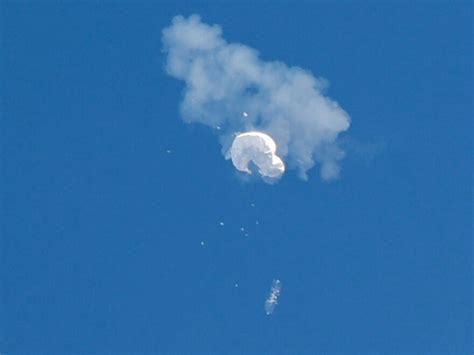Conclusion of Balloon-Gate and Homeland Defense

Recent headlines about a (potential) Chinese spy balloon adrift across the United States have sparked several questions about what exactly happened, why it occurred, and what comes next. However, what has not been discussed (yet) is that we have all witnessed the very first kinetic Homeland Defense Mission in the United States and its territories.
So, for just a minute, let’s put aside the politics, the hysteria, hype, and arguments about satellites vs. balloons (a semantical argument, as all tools have a role in a tool box) and solely focus on Homeland Defense and how this went down.
Understanding Homeland Defense
First of all, what is Homeland Defense and how does it work?
In very simple terms, Homeland Defense (HD) is when the US DOD is the lead federal agency in charge of the protection of the US, in which an external (or internal under certain specific conditions) threat(s) emerges and requires capabilities that exceed that of civilian federal agencies or in the event of war and an armed attack is possible to be prosecuted against the US homeland, as directed by the President of the United States. What this actually means is that in the event of an emergency, the US DOD acts as the lead, with other agencies supporting, and this is not all that surprising (however, in the internal US agency political landscape, small roosters crow the loudest).
Homeland Defense Operations
Once the situation became known publicly and the US DOD confirmed that it had begun coordinating with other federal agencies to deconflict airspace for civilian air travel, as well as begin counterintelligence mitigation efforts (DOE has several facilities associated along the route), a more insightful breakdown of HD operations occurred.
These mitigation efforts are a two-part process that includes internal DOD to subordinate agencies as well as their national security-related facilities, and several federal, state, and civilian agencies, including the Department of Energy, the FBI, and the US Department of Interior. While the US DOD will not release what mitigation measures were undertaken, it is safe to assume that all relevant EMS actions were curtailed concurrently with the US conducting ELINT and SIGINT operations against the craft (later confirmed). Another aspect of US HD missions is the integration of civil and military radars and air traffic control systems. What this means is that US FAA radars also have a dual-use capability and are synergized into the US operational airspace picture, and vice versa. This was evident during the shootdown off the coast of South Carolina and recorded and written about in detail by the exceptionally gifted The War Zone.
The Balloon’s Path of Travel

What is critical to note is the specific path of travel of this wayward balloon. The balloon passed over the US Alaskan region, home to several early warning sites, missile facilities, and the new US Army Arctic formations. The balloon then passed over the nuclear submarine base in Washington State, home to numerous nuclear submarines as well as a major joint military base, known as JBLM or Lewis-McChord, and then subsequently over Yakima training area, which at times conducts highly specialized operational testing of military equipment. After passing over these facilities, the balloon then traveled over and near US military facilities housing active ICBM silos in Wyoming and Montana before cutting into the US state of Nebraska, home to strategic US facilities, including in Omaha. The balloon then passed over the US state of Tennessee and within the vicinity of the Oak Ridge Department of Energy facility, a very sensitive and secretive facility with significant US national security purposes. The balloon continued into South Carolina, passing two major military bases before being targeted for destruction. One can infer what forms of mitigation measures would be needed to be used over these facilities, and we will leave that to the audience to ponder.
Regardless of the timeline and events on when the United States President was actually briefed and when a decision was actually made, the US DOD tasked the USAF to execute a kinetic attack on the balloon within the territorial waters of the US.
Final Thoughts
Despite all the questions that remain, the execution of a kinetic HD operation was carried out in real time with an entire population watching, listening, and waiting. It was a very successful operation once it was initiated. In short order, the US will disclose initial findings and more will follow.
Hopefully, kites do not end up being lost next.
Kindly,
Mel









